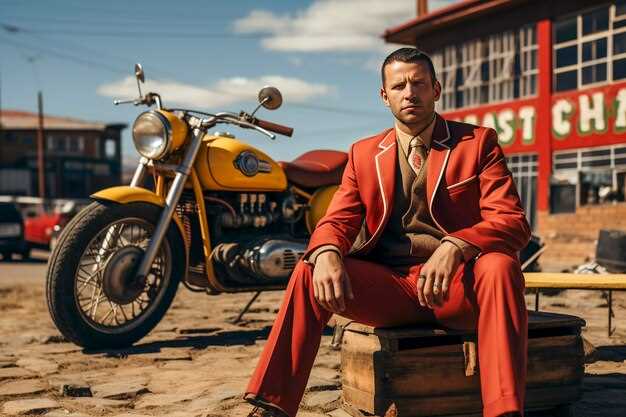
The history of motorcycle clubs in America is a fascinating journey that reflects the cultural and social changes of the nation. From their humble beginnings in the mid-20th century, these clubs have carved out a unique identity, embodying ideals of freedom, brotherhood, and rebellion. The evolution of these organizations has often mirrored the shifting landscapes of American society, showcasing their ability to adapt and thrive in various circumstances.
Initially, motorcycle clubs emerged as informal gatherings of enthusiasts who shared a passion for riding. As these clubs began to formalize, they established charters, rituals, and codes of conduct, leading to a more structured community. The rise of the popular culture surrounding motorcycles, especially in the post-war era, brought increased visibility and legitimacy to these organizations, transforming them into significant social entities that represented a distinct way of life.
Throughout their history, motorcycle clubs have faced challenges, including societal stigma and legal scrutiny, yet they continue to evolve and maintain their presence in American culture. As we delve deeper into the evolution of these clubs, we will explore their roles in promoting camaraderie, advocating for riders’ rights, and navigating the complexities of their identity within both the motorcycle community and the larger society.
The Formation of Early Motorcycle Clubs in the 20th Century
In the early 20th century, America witnessed the emergence of motorcycle clubs, which played a significant role in shaping the culture of motorcycling. These clubs were formed by enthusiasts who shared a passion for motorcycles and the freedom they represented. As the popularity of motorcycles surged, so did the desire for camaraderie and community among riders.
The first wave of motorcycle clubs began to appear around the 1900s, primarily in urban areas where motorcycling became an alternative to traditional forms of transportation. Clubs often provided a structured environment for riders to gather, share experiences, and promote their love for motorcycles. One of the earliest known clubs, the Motorcycle Club of America, was established in 1903, paving the way for others to follow.
These early motorcycle clubs often organized races and competitive events, attracting attention and fostering a spirit of friendly rivalry. Members would customize their motorcycles to enhance performance and aesthetics, contributing to the burgeoning culture of motorcycle craftsmanship. Each club cultivated a unique identity, often marked by specific colors and insignias, which helped to establish loyalty among members and a sense of belonging.
As the motorcycle industry evolved, so did motorcycle clubs, adapting to changes in technology and societal attitudes. By the 1920s, clubs became more diverse, attracting individuals from various walks of life, including veterans and workers seeking adventure and a connection with like-minded enthusiasts. This evolution laid the groundwork for the more prominent and organized motorcycle clubs that would emerge in the subsequent decades.
The Impact of the 1960s Counterculture on Motorcycle Club Identity

The 1960s marked a pivotal moment in American history, characterized by a vibrant counterculture that challenged traditional norms and explored new forms of expression. Among the diverse manifestations of this counterculture were motorcycle clubs, which began to redefine their identities and functions within society. As young individuals sought freedom and rebellion, motorcycle clubs emerged as symbols of nonconformity, drawing inspiration from the ethos of the era.
This period saw an influx of veterans returning from the Vietnam War, many of whom turned to motorcycles as a means of coping with their experiences. The sense of brotherhood developed among these riders was emblematic of the countercultural movement’s emphasis on community and support. Motorcycle clubs transformed from mere riding groups into tight-knit communities, providing members with a sense of belonging and purpose amid a society in turmoil.
The aesthetics of the counterculture, including vibrant colors, psychedelic art, and an overall embrace of individuality, influenced the branding and style of motorcycle clubs. Patches, leather jackets, and customized bikes became not just modes of transportation but symbols of a lifestyle that celebrated freedom and self-expression. Clubs began to adopt names and insignias that reflected their values, often referencing themes of rebellion and anti-establishment sentiments.
Moreover, the relationship between motorcycle clubs and the broader counterculture facilitated a shift in public perception. While earlier motorcycle groups were frequently viewed with suspicion and linked to criminal activities, the 1960s allowed clubs to emerge as part of a larger movement for social change. This dual identity positioned motorcycle clubs as both outlaws and advocates of individual rights, challenging societal expectations and norms.
The influence of music and art during the 1960s cannot be understated in shaping motorcycle club identity. The rock ‘n’ roll scene, with its themes of liberation and nonconformity, resonated deeply with riders. Many clubs co-opted the rebellious spirit of rock music, further cementing their identities as outsiders. In this context, motorcycle clubs became a canvas for artistic expression, embodying the counterculture’s desire to break free from societal constraints.
In conclusion, the 1960s counterculture had a profound and lasting impact on the identity of motorcycle clubs in America. These organizations evolved from simple riding groups into dynamic communities that celebrated freedom, creativity, and camaraderie. The legacy of this era continues to influence motorcycle culture today, as clubs remain symbols of rebellion and individuality.
The Current Landscape: Diversity and Legal Issues Within Modern Motorcycle Clubs

The motorcycle clubs in America today reflect a wide array of cultural and social backgrounds, showcasing a significant evolution from their roots. Initially dominated by a homogenous group of riders, modern motorcycle clubs now embrace diversity in gender, ethnicity, and age. This shift has been spurred by an increasing number of women and minorities joining motorcycle communities, which has enriched the culture and broadened the appeal of motorcycle riding. New clubs often promote inclusivity while still offering camaraderie and support similar to the traditional male-dominated establishments.
As the landscape of motorcycle clubs continues to evolve, legal issues have increasingly come to the forefront. Law enforcement agencies have often viewed motorcycle clubs with suspicion, associating them with crime and violence. This perception has led to heightened scrutiny and regulatory challenges, prompting clubs to navigate a complex legal terrain. Legal battles regarding freedom of assembly, police overreach, and the rights of club members have become a common aspect of club dynamics. For many, these legal issues reflect not just the history of motorcycle culture, but the ongoing struggle for recognition and respect within society.
Moreover, the increase in motorcycle club diversity has prompted conversations about the identity and purpose of these organizations. While some clubs adhere closely to the traditional values of brotherhood and rebellion, others focus on charitable initiatives and community engagement. This diversification has led to a redefinition of what it means to be part of a motorcycle club, as many members seek to balance the allure of freedom with a sense of responsibility and community involvement.
In summary, modern motorcycle clubs in America are characterized by their growing diversity and the intricate legal challenges they face. As they continue to evolve, these organizations must find a way to maintain their history and distinctive culture while adapting to the changing social landscape and legal environment.











